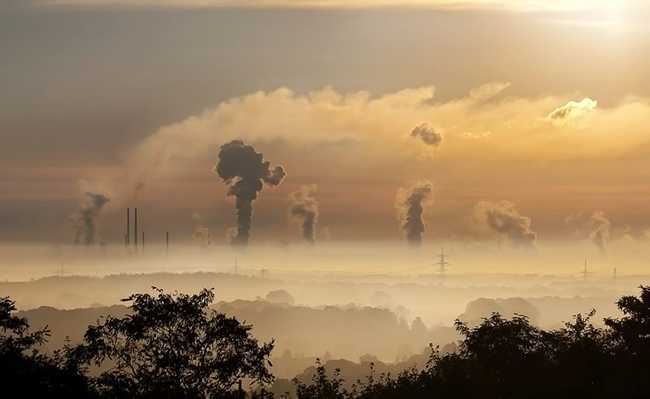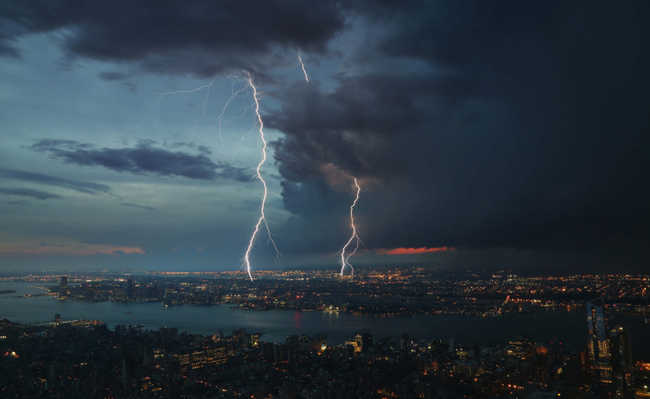Carbon credits: what are they?
Carbon credits are a form of purchasing power based on reducing greenhouse gas emissions

Photo-Rabe image by Pixabay
Carbon credits are measurement units that each correspond to one ton of carbon dioxide equivalent (t CO2e). These measures are used to calculate the reduction in greenhouse gas (GHG) emissions and their possible trading value. Yes, that's right, the reduction of greenhouse gas emissions can be commercialized.
Based on Global Warming Potential (Global Warming Potential - GWP), all greenhouse gases, such as methane, ozone, among others, are converted into t CO2e. Thus, the term "carbon equivalent" (or COe) is the representation of greenhouse gases in the form of CO2. Thus, the greater the global warming potential of a gas in relation to CO2, the greater the amount of CO2 represented in CO2e.
Nations that promote greenhouse gas emission reductions receive a reduction certification that will count as carbon credits. The latter, in turn, can be traded with countries that have not reduced emissions.
Thus, the more emissions in tons of CO2 equivalent are reduced by a country, the greater will be the amount of carbon credits available for commercialization, proportionally.
Story
Carbon credits emerged with the Kyoto Protocol, an international agreement that established that, between 2008 and 2012, developed countries should reduce 5.2% (on average) of greenhouse gas emissions compared to levels measured in 1990.
Despite the reduction target being collective, each country achieved higher or lower individual targets according to its stage of development. In this way, developing countries were allowed to increase their emissions. This is because the treaty is based on the principle of "common but differentiated responsibilities": the obligation to reduce emissions in developed countries is greater because, historically, they are (more) responsible for the current concentrations of greenhouse gases emitted into the atmosphere.
The European Union was set with the goal of reducing 8% of its emissions, while the US had the goal of reducing 7%, Japan 6% and Russia 0%. In contrast, for Australia an increase of 8% was allowed and, for Iceland, 10%. Developing countries, including China and India, were not forced to reduce emissions. The United States and Canada refused to ratify the Kyoto Protocol, claiming that the agreed commitments would be negative for their economies.
All these definitions were in line with the Clean Development Mechanism (CDM) created by the Kyoto Protocol, which provides for certified emission reductions. Those who promote the reduction of polluting gas emissions are entitled to certification of carbon credits and can trade them with countries that have targets to meet.
However, with the Paris Agreement - treaty within the scope of the United Nations Framework Convention on Climate Change (UNFCCC - acronym in English) which governs measures to reduce carbon dioxide emissions from 2020 and which replaced the Protocol Kyoto - it was established that emission reduction targets and purchases are all defined domestically, that is, each country defines how much it wants to reduce and how and from whom it wants to buy carbon credits.
Obstacles and market
Although carbon credits have been an accepted and regulated idea, their implementation in the market has not been very fast.
According to program experts Certified Emission Reduction Units Procurement Tender, the low adherence of carbon credits to the market is due to the fact that projects involving carbon credits are not developed as the sole purpose of the sale. These are usually energy projects where the sale of carbon credits is one of the revenue elements. Thus, if the sale of carbon credits does not offset the cost difference between cleaner and conventional energy, the emission reduction project is left out.
In addition, the market's low adherence to carbon credits is caused by the uncertainty of the approval of projects involving the reduction of GHG emissions.
Countries that sell carbon credits feel the need for a firm commitment from the buyer countries. In some cases, countries selling carbon credits are unable to create and maintain teams focused on their projects due to lack of personnel.
Furthermore, the fact that each country reduces emissions as it sees fit brings a real risk that some countries will launch credits on the market for emissions that they are not actually reducing. That would be a disaster for the mechanism itself, but above all for the atmosphere.
Despite these setbacks, to help offset greenhouse gas emissions and connect companies to whom they provide carbon credits, industries and institutions have created online platforms and plan to bring together initiatives that still occur in isolation in some sectors of the Brazilian economy.
Paris and the Amazon Agreement
With the replacement of the Kyoto Protocol by the Paris Agreement, many actors involved with the issue of reducing GHG emissions expected to see an explosion of resources for forests in a new market mechanism. However, Brazil left forests out of carbon credits based on the argument that the Amazon belongs to Brazil and should not be an object of the international market.








